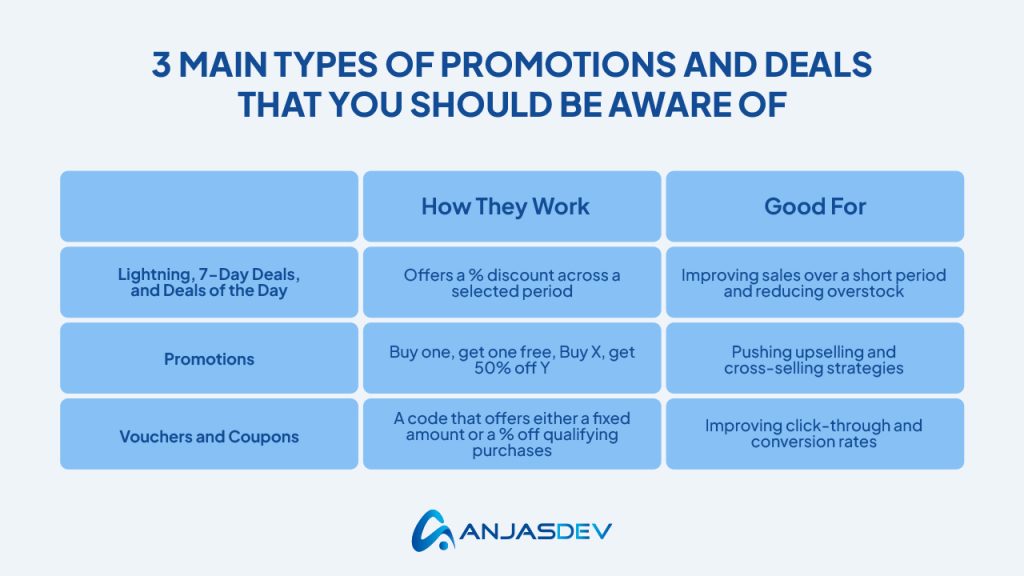If you have a trademarked brand, using Amazon storefront tools opens up a world of opportunities. These tools, designed to boost your brand’s visibility and reach, empower you to craft high-quality pages and listings for your items. This not only increases traffic and conversions but also enhances your brand’s presence on the platform by following amazon storefront best practices.
Setting up an Amazon storefront is just the beginning. The real journey begins when you strive to be among the best Amazon storefronts, a path that promises growth, success, and recognition.
Rest assured, we’re here to guide you on how to edit your Amazon storefront for success with our Amazon storefrontbest practices, providing you with the confidence and direction you need.
Storefront Design and Branding
There are 9.7 million sellers on Amazon, with 1.7 million of them regularly selling and listing goods. To make a great first impression and ensure your brand stands out from the crowd, you must implement amazon storefront best practices.
You can do this by:
- Creating a cohesive brand image – Establishing a cohesive brand image is key. Consistency across your Amazon Storefront pages and other platforms, such as social media, is crucial. This includes selecting a color scheme that represents your brand and using key imagery that resonates with your audience.
- Effective use of banners and logos – Create something that represents you. That way, users will become familiar with your brand’s iconography and can identify you as a trusted seller.
- Mobile optimization – Although Amazon does some of the heavy lifting on this front, you’ll want to make sure any images and text are easy to load and read on mobile devices.
Content Strategy
It’s more than just your Amazon storefront design where your company should shine. Consider implementing a robust content strategy that aligns with amazon storefront best practices to showcase your brand and products effectively.
Layout and Media
Although Amazon provides plenty of templates for you to shape your storefront, you want to make sure you use the layout of your page to showcase your brand to the best of your ability.
This includes high-quality images and videos. For the best resolution and quality, images should be at least 1500 x 1500 px and video files should be optimized for quick loading times on all devices.
A+ Content for Compelling Brand Stories
Empower your brand by leveraging A+ Content. Formerly known as Amazon Enhanced Brand Content, this tool gives you greater control and customization options over your store’s listings, allowing you to shape your brand’s image and messaging on the platform by following amazon storefront best practices.
Showcase Customer Reviews
Your storefront page is a powerful platform to showcase positive customer reviews and testimonials. By highlighting these for your star products, you can significantly influence potential customers’ purchase decisions. After all, 97% of customers consider reviews when making a purchase, and 92% are more likely to buy if there are customer reviews available. This is a testament to the quality of your products and your ability to influence potential customers.
Detailed Product Descriptions
Just as important as the design of your storefront and product pages are the descriptions of your products. These should be a perfect balance between being easy to read, providing great detail, and selling the product and your brand. You can do this by:
- Make sure all important and pertinent information about the product is at the top of the page.
- Using bullet lists to make key features easy to digest.
- Utilizing high-quality images showing the product from different angles and in use where applicable.
- Inserting videos demonstrating the product.
- Carrying over core branding and theming from your main storefront page.
Product Organization and Categorization
Just as important as shoppers being able to find your store is their being able to browse it effectively to find what they need.
Don’t just add items to your Amazon storefront carelessly. Ensure your store follows a logical pattern of product grouping, using categories that customers easily understand and follow. Look at market leaders in your industry to help with this, as their product grouping patterns and category types will be familiar to consumers.
Larger product categories can even be given their own dedicated storefronts, making them more accessible and appealing to shoppers. For example, if you are selling clothing, you could create different custom storefronts for your men’s, women’s, and kidswear sections.
Check users’ browsing habits regularly to ensure that your Amazon storefront’s layout and categories are working as intended. You can also utilize the results gathered from your in-store search bar to determine popular items or categories that they are looking for.
Search Engine Optimization (SEO) for Amazon
SEO doesn’t just apply to standalone websites, and you should make sure to use it comprehensively throughout your Amazon and other e-commerce platforms. Here are Amazon SEO best practices that you should abide by.
- Keyword research is crucial to identify the terms shoppers use to find products like yours. Implement these keywords strategically in product titles and descriptions, balancing searchability with readability.
- Optimize titles to include key features and benefits while crafting compelling descriptions that inform and persuade.
- Backend search terms offer additional optimization opportunities, allowing you to include relevant keywords without cluttering customer-facing content. However, use these judiciously and avoid keyword stuffing.
- Sales velocity and conversion rates significantly impact Amazon’s search algorithm. Products that sell well and convert browsers into buyers tend to rank higher. Focus on creating attractive listings, competitive pricing, and excellent customer service to boost these metrics and improve your storefront’s overall SEO performance.
If you want to set up your Amazon storefront for success, the SEO experts at AnjasDev can help. Experienced in Amazon and other e-commerce platforms, we can create a robust Amazon SEO and branding strategy to put your store on the map.
Related: What Is SEO and Why Is It Important?
Promotions and Deals
Amazon is a crowded marketplace, and with so much competition, it’s not surprising that brands that effectively leverage promotions and offers see far more traffic and sales than those that don’t.
There are 3 main types of promotions and deals that you should be aware of.

To use these effectively, consider creating a promotional calendar that takes into account seasonal events and holidays that align with your brand. These can also be perfect times to leverage Amazon’s promotional tools, including pay-per-click advertising (PPC), to boost your storefront’s traffic.
Customer Service and Engagement
People want to interact with a good business. Exceptional customer service is crucial for Amazon marketplace success, especially since customer reviews are an integral part of Amazon’s algorithm. Implement the following to ensure top customer satisfaction.
- Prompt responses to inquiries build trust and satisfaction, showing customers their concerns are valued.
- Professionally handling negative reviews demonstrates integrity and a commitment to improvement, potentially turning critics into advocates.
- Actively encouraging customer feedback provides valuable insights for enhancing products and services while making customers feel heard.
These practices contribute to building a loyal customer base, which is essential for long-term success. Satisfied customers are more likely to leave positive reviews, make repeat purchases, and recommend the store to others. Prioritizing customer service leads to increased sales, improved ratings, and sustainable growth.
Analytics and Performance Tracking
Once you have implemented some of our Amazon Storefront best practices, you’ll want to know how your changes are performing.
Key Metrics to Monitor
Monitoring key metrics is essential for Amazon sellers to measure results and performance. These include sales volume, conversion rates, customer acquisition cost, and inventory turnover. Although you can track these yourself, third-party tools like Helium10 or JungleScout can often do a lot of the hard work for you and consolidate this data in a way that is easy to use for future improvements.
Amazon Brand Analytics
Alongside your own work and any third-party tools, Amazon Brand Analytics provides valuable insights into search terms, market basket analysis, and customer demographics. The great thing about this is that it is truly customer-focused in its data, giving you a window into your customers’ wants and needs.
A/B Testing
A/B testing is crucial for continuous improvement and a cost-effective way to implement an iterative approach to your Amazon storefront. Experiment with product titles, images, pricing, and descriptions to optimize performance. By systematically testing variations, you can identify what resonates best with your target audience.
Wrap-up
Hopefully, you’ll have some good ideas now on how to edit your Amazon storefront for success. Remember to be consistent in your brand design and messaging, provide informative content on your products, and go above and beyond for your customers.
If it all seems like a lot to balance, the team at AnjasDev has your back. Schedule a consultation to find out how we can fine-tune your Amazon storefront design, overall content, and SEO strategy to skyrocket your sales.




